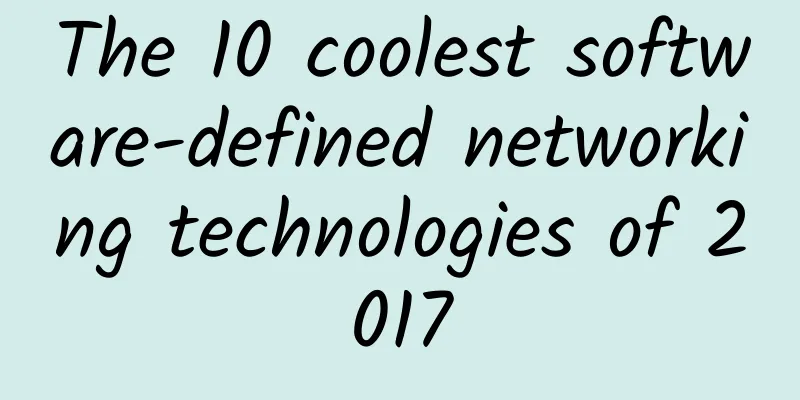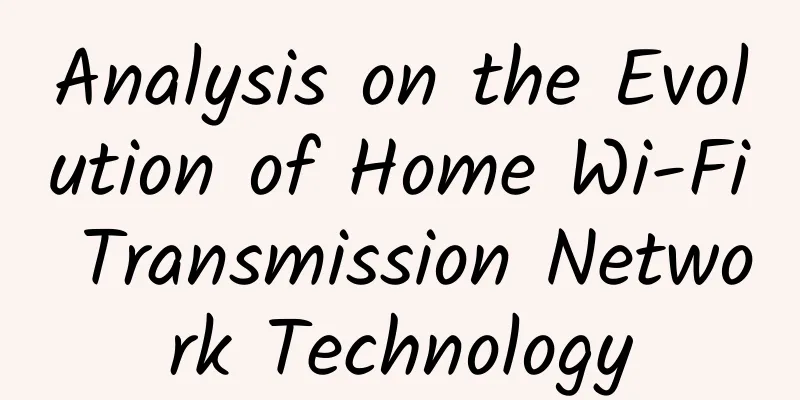The 10 coolest software-defined networking technologies of 2017

|
Software is driving the innovation engine of the network industry, and the fastest-growing vendors have increased their investment in software-defined networking (SDN) technology to make networks more agile, flexible and cost-effective. Customers are deploying SDN to improve network access control, micro-segmentation, and quickly implement software-based product capabilities through security and video applications. Research firm IDC predicts that the SDN market will grow from approximately $400 million in 2013 to $6.6 billion in 2017. IDC estimates that the SDN market will reach $14 billion by 2021, with a compound annual growth rate of 25%.
Here’s a look at the 10 coolest and most hyped SDN technologies in the market in 2017. 1. 128T Networking Platform Network software startup 128 Technology has created a distributed routing and network service product that uses secure routing to simplify network architecture and provide end-to-end control and visibility without disrupting existing infrastructure. 128T Networking Platform is a subscription-based platform that allows you to build segment-based, software-defined, service-centric networks. The startup, based in Burlington, Massachusetts, can natively provide stateful firewalls, load balancing, and other advanced network functions, reducing the need for expensive standalone devices. 2. Apstra 2.0 As a pioneer in the field of intent-based networking to achieve self-operating networks, startup Apstra released the second generation version of its vendor-agnostic Apstra Operating System (AOS) flagship product this year. The new AOS 2.0 provides an integrated intent-based OS and applications that can automatically prevent and repair network failures to improve infrastructure uptime. Its distributed data repository is also a repository of all intents, configurations, and telemetry status. AOS 2.0 accelerates the process of moving from traditional data center infrastructure to modern leaf-spine infrastructure with fully automated and integrated Layer 3 bottom layer and Layer 2 layer. AOS 2.0 also includes full lifecycle automation of VXLAN-based network services within and across racks. 3. Cisco ACI 3.0 As the market leader of SDC, Cisco's ACI, which was launched four years ago, now has more than 4,000 customers. ACI is based on Cisco switches, software and Application Policy Infrastructure Controller (APIC). Cisco launched ACI 3.0 this year, with new interfaces, enhanced security and Kubernetes support. Cisco also said that ACI 3.0 will be extended to the public cloud, allowing ACI to be deployed on AWS, Google Cloud Platform and Microsoft Azure. Cisco said that customers will have the flexibility to run applications, and applications can run across customers' own private clouds and the public clouds of their choice while maintaining consistent network policies. 4. Cisco Intent-Based Networking The biggest announcement of the year was the launch of the Network Intuitive platform, an intent-based networking system that predicts actions, blocks security threats, evolves, and learns. Inside the platform is Cisco's new Software Defined Access, which automates tasks such as troubleshooting and configuration. Network Intuitive also includes Cisco's new IOS XE software, which is programmable and modular and will "drive intent-driven networking for the next 30 years," Cisco said. Cisco's intent-based networking provides enterprises with a new way to deploy and manage multi-cloud and hybrid cloud environments. Cisco's partnership with Google Cloud is aimed at countering VMware Cloud On AWS, and the battle between Cisco and VMware in the field of SDN will begin in 2018. 5. Google Andromeda In November, Google launched a new version of its software-defined network stack, Andromeda, which significantly accelerated network performance on the Google Cloud Platform. Andromeda 2.1 reduces latency between virtual machines on the Google platform by 40% compared to the previous generation of the Andromeda stack and is 1/8 of the original version launched in 2014. Andromeda, a software-defined network technology, powers Google Cloud. The solution enables software-defined control of various Google Cloud components, including routers, switches, operating systems, and hypervisors. 6. SnapRoute FlexSwitch The Palo Alto, California-based startup's flagship FlexSwitch product is a fully programmable open source software stack designed to help enterprises improve the management of their cloud systems. SnapRoute's FlexSwitch makes every component of the network stack fully visible to operators and is fully modular, so operators can continuously secure or upgrade the parts of the infrastructure they need to run without any impact or risk to the business. The SDN product can run on any bare metal hardware and allows operators to manage the network using a variety of options, including CLI, JSON, or tools like Puppet or Chef. SnapRoute received $25 million in funding from AT&T and Microsoft Ventures in its financing this year. 7. Talari Networks SD-WAN specialist Talari Networks has spent much of 2017 building new technologies and channel partnerships, releasing new features around its flagship Talari SDN-WAN platform, including native support for WAN optimizations such as data compression and deduplication. Talari's products create a responsive network that adapts to demand and actual network conditions, ensuring that critical applications are given high priority. The subscription-based SD-WAN product can be provided to customers via the cloud or as an all-in-one product. Talari Networks recently announced its new CEO, Patrick Sweeney, who spent 16 years at SonicWall as vice president of marketing and product management before moving to Dell, which acquired SonicWall in 2012. 8. Versa Cloud IP Platform In 2017, software-defined WAN startup Versa Networks significantly enhanced its Versa Cloud IP Platform capabilities, adding multi-malware security, embedding LTE into the solution, and supporting third-party virtual network functions, allowing customers to smoothly transition to SD-WAN. This enhanced platform now enables enterprise organizations to virtualize and software-define the entire branch and WAN, reducing complexity and improving agility. In November, Versa Networks added SD-WAN services to the platform, based on the quality and behavior of the SD-WAN circuit, through Mean Opinion Score-based traffic engineering and reporting, to achieve implementation evaluation of voice and video segments. 9. VMware NSX 6.3 Competing with Cisco for leadership in the SDN space is VMware's NSX network virtualization platform, which currently has about 3,000 customers. VMware released NSX 6.3 earlier this year, which has enhanced scalability and significantly improved performance in multi-tenant environments compared to the previous generation. The new version uses VMware vRealize Network Insight, a technology acquired from Arkin last year, to provide management capabilities and intelligence for software-defined data center environments. VMware also recently announced plans to acquire SD-WAN provider VeloCloud, allowing NSX to expand significantly into the SD-WAN field. 10. VMware NSX-T 2.0 VMware also has the NSX-T product, which is mainly developed for non-vSphere environments and was launched in 2017. This hypervisor-independent solution enables network and security management, targeting new application frameworks and architectures such as Container Networks Interface. VMware released NSX-T 2.0 in August, with new features including automation through OpenStack, expanded KVM and VMware Photon container support, micro-segmentation and container plug-ins for Kubernetes. |
<<: Are blockchain and IoT a match made in heaven?
>>: The secrets behind the IoT strategy of Internet giants at the end of 2017
Recommend
If you don’t understand, just ask, how can you make your home internet speed faster?
In the past few years, innovative technologies su...
AkkoCloud Germany/UK CN2 GIA replenishment annual payment starts from 299 yuan, 300-600M bandwidth
AkkoCloud is a merchant that mainly provides VPS ...
Summary information: Casbay/Eurasia Cloud/ZgoCloud/Asia Cloud/Nai Cloud
This week I will continue to share some host info...
Huawei releases next-generation machine vision cameras and new products for 2020
[Hangzhou, China, May 25, 2020] Today, the Huawei...
V.PS Netherlands/Germany/UK data center free upgrade AS9929 plus 15% discount starting from €5/month
V.PS is offering free default network upgrade to ...
After talking so much about 5G, the most critical technology is here
When it comes to antennas, everyone must be famil...
12% off on all CUBECLOUD products, Los Angeles special annual payment starting from 230 yuan
CUBECLOUD has launched a promotion during the Mid...
5 reasons why DevOps will be a big thing in 2018
DevOps has been a hot topic for a few years now. ...
Deutsche Telekom CEO blasts OTT: generating 80% of traffic but not paying a penny for infrastructure
According to Mobile World Live, Deutsche Telekom ...
In the 5G era, will you still look for WiFi everywhere?
Watching short video apps like Tik Tok and Kuaish...
Tianyi Cloud's transformation and upgrading provides cloud services that are most in line with customer needs
On June 30, 2016, China Telecom and Huawei offici...
Blockchain makes cities smarter and more innovative
This article takes stock of the smart city applic...
The Importance of Switchgear to Data Center Uptime
Among all the electrical and system components th...
"5G IoT, Smart Journey" - China Unicom IoT shines at 2020 Beijing Communications Exhibition
From October 14 to 16, the 2020 China Internation...
CloudCone 5th Anniversary: $14/year KVM-dual core, 1G memory, 41G hard disk, 5TB/1Gbps, Los Angeles data center
CloudCone has been established for 5 years. The c...









